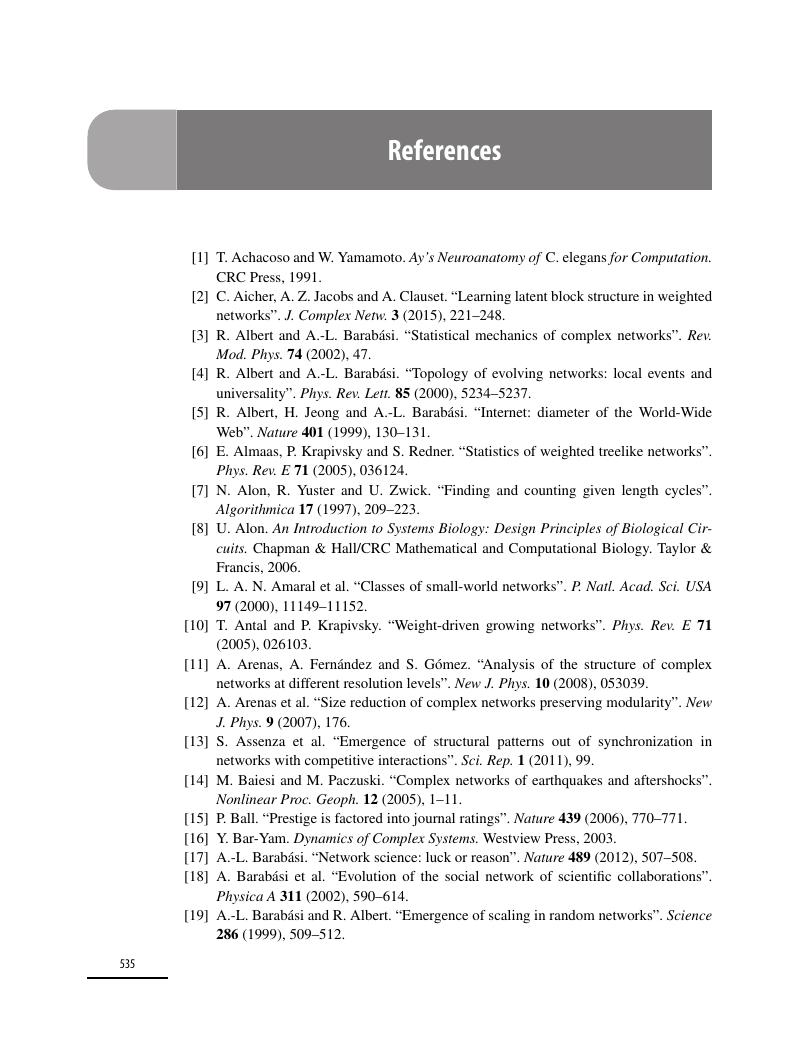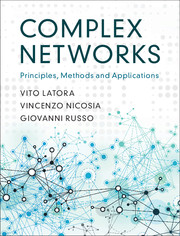Book contents
- Frontmatter
- Dedication
- Contents
- Preface
- Introduction
- Epigraph
- 1 Graphs and Graph Theory
- 2 Centrality Measures
- 3 Random Graphs
- 4 Small-World Networks
- 5 Generalised Random Graphs
- 6 Models of Growing Graphs
- 7 Degree Correlations
- 8 Cycles and Motifs
- 9 Community Structure
- 10 Weighted Networks
- Appendices
- References
- Author Index
- Index
- References
References
Published online by Cambridge University Press: 11 October 2017
- Frontmatter
- Dedication
- Contents
- Preface
- Introduction
- Epigraph
- 1 Graphs and Graph Theory
- 2 Centrality Measures
- 3 Random Graphs
- 4 Small-World Networks
- 5 Generalised Random Graphs
- 6 Models of Growing Graphs
- 7 Degree Correlations
- 8 Cycles and Motifs
- 9 Community Structure
- 10 Weighted Networks
- Appendices
- References
- Author Index
- Index
- References
Summary

- Type
- Chapter
- Information
- Complex NetworksPrinciples, Methods and Applications, pp. 535 - 549Publisher: Cambridge University PressPrint publication year: 2017



